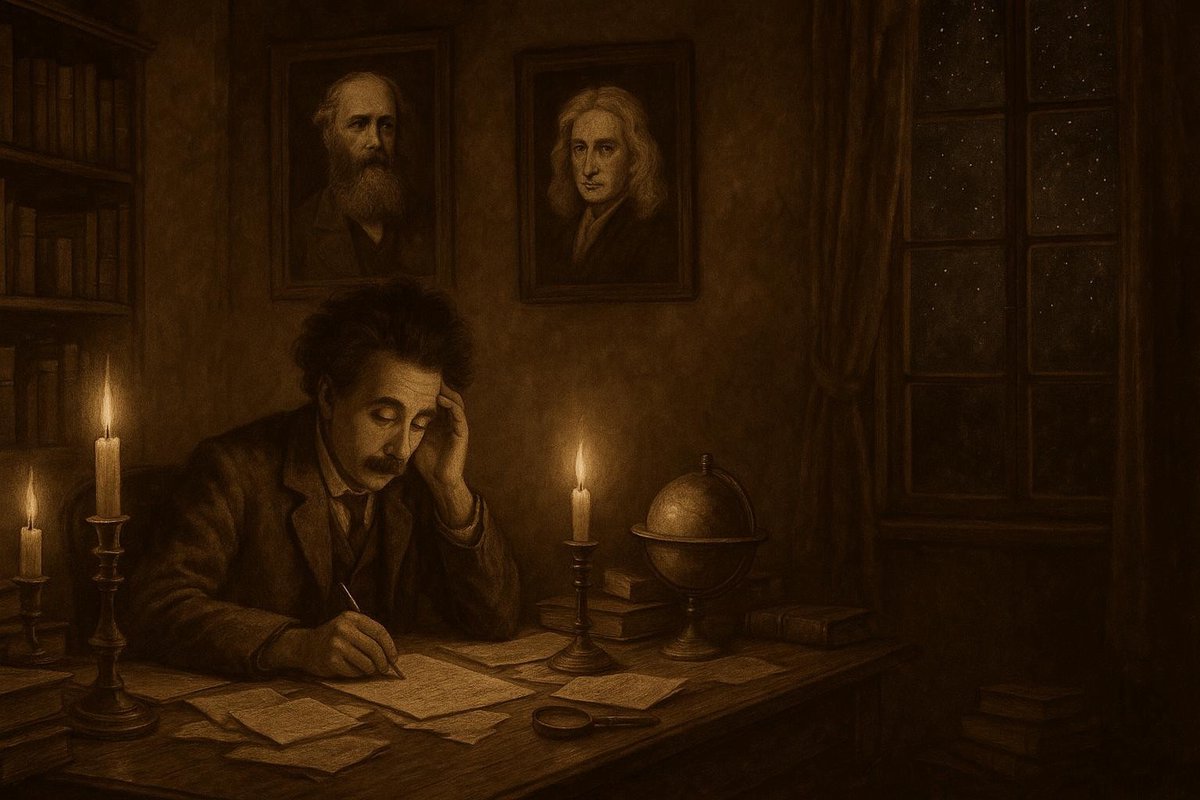
An Unexpected Question: Was Einstein’s Theory as Revolutionary as We Think?
Imagine a world where space and time are not absolute. Albert Einstein, in the early 20th century, boldly proposed this very idea. His Theory of Relativity turned the scientific community upside down, challenging the Newtonian physics that had stood for centuries. But was Einstein’s work truly as revolutionary as it’s often portrayed, or was it simply a product of its time, waiting to be discovered by someone?
Origins: The Science Before Einstein
Before Einstein took the stage, the world of physics was dominated by the ideas of Sir Isaac Newton. For over two centuries, Newton’s laws effectively explained the movements of the planets and the physics of everyday life. However, by the late 19th century, cracks began to appear in this seemingly unbreakable foundation.
- Newton’s theories could not explain the behavior of light and electromagnetic fields, as demonstrated by the Michelson-Morley experiment in 1887.
- Maxwell’s equations suggested that light behaved as a wave, yet this didn’t gel with Newtonian physics.
- The photoelectric effect and the curious nature of light perplexed scientists, indicating that Newton’s framework was incomplete.
These findings created a fertile ground for new ideas. The scientific community was ripe for change, but it needed someone to connect the dots. Enter Einstein.
Key Figures: Who Paved the Way for Einstein?
While Einstein is undoubtedly the superstar of the Theory of Relativity, several key figures laid the groundwork for his success. Each contributed a piece to the complex puzzle that Einstein eventually completed.
- James Clerk Maxwell’s equations unified electricity, magnetism, and optics, laying down the principles that would inspire Einstein’s thinking.
- Hendrik Lorentz and Henri Poincaré worked on the mathematics that would underpin the Special Theory of Relativity, particularly the Lorentz transformations.
- Albert Michelson and Edward Morley conducted pivotal experiments questioning the nature of light propagation.
These scientists, among others, set the stage for Einstein’s breakthrough. They turned their telescopes and minds toward the problems Newtonian physics left unsolved, inviting solutions just waiting to be discovered.
The Turning Point: Einstein’s Eureka Moment
Einstein’s 1905 ‘Annus Mirabilis’ papers were nothing short of revolutionary. His Special Theory of Relativity redefined the concepts of time and space, yet it wasn’t an isolated stroke of genius out of nowhere.
- Einstein proposed that the laws of physics are the same for all non-accelerating observers and that the speed of light is constant, regardless of the observer’s velocity.
- This bold proposition was fueled by existing scientific problems, such as inconsistencies between Newtonian physics and Maxwell’s equations.
- His insights on the photoelectric effect, another ‘Annus Mirabilis’ paper, would later earn him a Nobel Prize.
Einstein’s ideas arrived just when they were most needed. The scientific world was ready to embrace a new paradigm, and Einstein provided the map to navigate this uncharted territory.
Impact on the World: A Lasting Legacy
Einstein’s theory didn’t just change theoretical physics; it had profound implications across various fields and society. From GPS technology to nuclear energy, the fingerprints of relativity are all around us.
- His General Theory of Relativity, published in 1915, led to understanding gravitational waves, confirmed over a century later in 2015.
- Relativity challenged philosophical perceptions of reality, influencing thinkers across disciplines.
- The equation E=mc² unlocked potential for both progress and peril, playing a crucial role in the development of nuclear power.
Einstein’s work continues to inspire, illuminate, and sometimes complicate our understanding of the universe. His legacy proves that revolutionary ideas can have roots in the intellectual soil prepared by others.
In conclusion, Einstein’s Theory of Relativity was both revolutionary and inevitable, shaped by a confluence of scientific curiosity and historical context. It reminds us that even the most groundbreaking ideas are often part of a larger scientific tapestry.
Fuel Someone Else’s Curiosity
If you found this exploration into the Theory of Relativity compelling, why not share it with a friend? Encourage them to question assumptions, challenge accepted truths, and dive deep into the curious world of scientific discovery. Together, we can fuel the flames of curiosity and keep the spirit of inquiry alive.

Leave a Reply